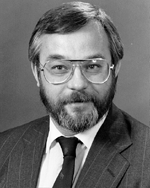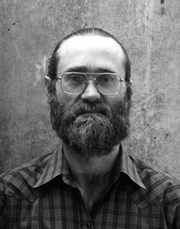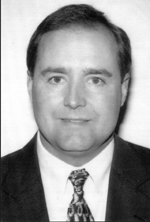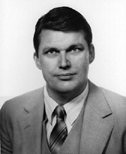

That’s why we called on a dozen HP 3000 experts to ask what kind of 1998 they think the HP 3000 community will experience – what the next 12 months will bring to the marketplace and to companies which are relying on HP 3000s. Our panel covers much of what’s important to HP 3000 customers – growth of the platform, technical to do lists, the promise of new technologies and the resolve of HP management to support the 3000. We offer their answers as a set of tea leaves to help interpret the future of a computer system which already has more of a past than the future many other platforms will ever have.
On what kind of 1998 the 3000 will have:
I believe it is a very exciting time for all of us. With the changes that have occurred in the industry – the emergence of NT and the challenge of Year 2000 – many companies have reevaluated their IT strategies and have concluded that proprietary is not so bad. As a matter of fact, they have concluded that if the application is meeting a business need, it makes no sense to change, and in the case of the HP 3000 it is becoming the preferred solution. This is helping the HP 3000 business a great deal.
As for 1998, I think our customers will see the HP 3000 going after new business with a renewed fervor. We have some exciting new channel programs being planned, and [Marketing Manager] Roy [Breslawski]and I have just spent several days with some of our HP 3000 application providers getting their support for joint marketing and sales programs. Things are lining up for another great year.
We are also planning on making our new customers more visible to the industry, so when CIOs question their IT managers about the wisdom of continued investments in the HP 3000, they will be able to show them some of the new customers buying the HP 3000 for the first time. Our customers will also see more public information regarding HP 3000 success stories, particularly in the vertical market areas we will be targeting for our new business opportunities.
We asked Sterling what he thinks is the most important new achievement for CSY to accomplish in the coming year:
Coming up with our ability to top our achievements of this past year – especially the great success we have had improving the loyalty of our installed base. From what I am sensing, it is at an all-time high. It really makes me proud to hear how appreciative our customers are of the efforts all of my people have made to ensure their success. If we can keep this level of loyalty over the coming years, I will know we have been successful. I can’t tell you what an impact customer loyalty has on upper level management support of my team and our planned future investments. The positive feedback from our customers over this past year has not only been noticed by CSY, but by all managers up the line to Lew Platt. Over the next several weeks, you will see some validation of this!
On what kind of 1998 the 3000 will have
The HP 3000 market is at a very interesting crossroads. I believe that the erosion that was occurring in the HP 3000 base (companies leaving the platform) has stopped for now. There are still some sites leaving, but there are as many coming onto the platform, so the net result is a relatively stable base. I expect this to be what 1998 brings to the HP 3000. There will be as many sites on the platform in 1998 as 1997. I do not believe there will be a larger number of sites, although there may be more machines per site.
The challenge for Hewlett Packard (CSY) in the coming year is two-fold. First, to continue to reinforce its commitment to the platform, really more of a public relations thing. Continue to promote warm fuzzies, shipping new machines with higher performance. Continue to focus (by listening well) on those items the loyal HP 3000 customer base is wanting, such as enhancements to COBOL and continued enhancements to IMAGE.
Second, CSY needs to attract solutions to the platform. It is great to deliver a low end 3000 to spur the development of new solutions. But new applications will take time and will be driven by smaller startups and individuals, which means there may not be very many solutions developed that sell new boxes. Hewlett-Packard really needs to aggressively seek out the SAPs and Lawsons of the world, and offer financial incentives such as joint development or outright cash funding to get some of these solutions onto the HP 3000 platform. Almost all new HP 3000 users are credit unions, mail order companies, or HMOs. This isn’t rocket science to figure out why. There are great solutions in these three areas. It’s not the box, it’s the solution. Companies pick the software solution first, then purchase the box. The long-term viability of the HP 3000 will be dependent upon the solutions available for it.
Unfortunately, I believe 1998 will not bring meaningful new solutions to the HP 3000 platform. I am not convinced that CSY understands that solutions sell the box. Further, I do not believe HP has any kind of mechanism in place to fund third party software moving to the box.
In 1998 there will be more tools and a low end 3000, but that will not be enough to keep the HP 3000 viable in the long term. 1998 will also be a time for Year 2000 issues. HP 3000 users will be dedicating a lot of energies to this issue. The HP 3000 box will remain because the Year 2000 is too close. Users will not make a dramatic shift of platforms. For this reason, I believe that CSY has a window of opportunity between now and the Year 2000 to attract major solutions to the platform. Once the Year 2000 comes and goes, many HP 3000 users will be looking for what’s next. NT 5.0 being delayed till who knows when also helps to solidify the reliability and stability of the MPE/iX operating system.
Imagine if Computer Associates or SAP publicly said the HP 3000 was in their strategic plans? If CSY could get two or three new key solutions on the box from high profile vendors by the Year 2000, the sky could be the limit. High profile vendors on the HP 3000 would be huge for the platform, and would encourage smaller developers to consider the HP 3000 as well.
We asked Greenup what kind of impact he expects MPE middleware choices to have on the HP 3000’s ability to maintain its place in customer environments during 1998:
Middleware like our ODBC/32 driver and MiddleMan will help to increase the usage of the HP 3000. Many sites still have vital corporate data on the HP 3000 and the recent increase of good middleware for the platform will mean more uses for the HP host. Many of the most exciting new tools and technologies are Windows-based. Middleware like what we offer will allow the HP 3000 user to easily integrate these desktop technologies into the HP 3000.
On what kind of 1998 the 3000 will have:
Predictable and stable – business critical computing is still the central mission in CSY’s business plan. 1998 will be a major year for the HP 3000 user– this will be the real year for dealing with the Year 2000 problem. Executives will demand a conclusive resolution to this lagging question, driving the decision between their legacy applications and moving towards Year 2000-certified applications in the NT or UX worlds.
The good news is that CSY has been anticipating this, and has been diligently working to insure that either decision will be available; continuing to protect the investments of the HP 3000 user. Additionally, CSY has been faithful to the traditional values of the HP 3000 family – continued investment protection, growth opportunities, continued integration into heterogeneous computing environments.
Most importantly, HP/CSY is providing the tools you would need should you decide to invest in alternative operating environments as either a complement or replacement for the HP 3000 environment. The key is that HP is working on its promise to deliver on investment protection.
Finally, I think you will see a more aggressive CSY and HP 3000 product offering. The HP 3000 is clearly a superior application deployment platform, with a strong suite of excellent applications. They will take a directed, go-to-market strategy.
We asked Duncan what’s the most important change that resellers need to track for the HP 3000 in the coming year:
With GM Harry Sterling’s new CSY management team, I believe there will be a number of positive changes for resellers. First is the continued trend towards the reseller channel, both as a result of the success of the channel for CSY, and the continued trend within HP overall. As the majority of the largest HP 3000 resellers migrate to the distribution channel, CSY is making major investments in support of the channel – in resources, attention and staff.
Rather than lobbying for changes, I believe that the reselling community needs to watch the changes develop. Also, within the framework of a more focused channel model, the HP 3000 marketing resources will be directed towards incremental sales.
We feel that it will be essential for resellers to really focus their HP 3000 resources – sales, technical and marketing – and work with Integration Alliance and Hewlett Packard to help service the installed base. The market opportunity continues to be quite large, as the HP 3000 continues to be an excellent platform!
On what kind of 1998 the 3000 will have
I think 1998 will be a year where the word continues to get out slowly, and consistently, about the virtues of the HP 3000. As the 3000’s stealth advertising campaign sheds its cloak of invisibility – as more and more executives realize that maybe there is an alternative to the solutions being thrust down their throats by marketeers – the ability of the 3000 to step up to the plate will become more evident. I know of two situations where, within the last few months, a decision to ease the 3000 out of the mainstream has been dramatically reversed. There the 3000 is now considered a strategic, mission-critical platform. And I don’t think these companies are isolated examples!
We asked Furnivall what he thinks is the most important thing which can improve MPE for HP 3000 customers during 1998:
The most important thing that MPE lacks right now is not 64 bit-ness, although that is a crucial strategic endeavor. Nor is it even the dearth of vertical market apps, although that is a symptom. And, despite my own personal belief that some sort of Customer Funded Enhancement process is the way to go in the future, neither is such an advocacy initiative.
What I hear over and over is that the 3000 is incapable of providing the sort of GUI type interface that users are now demanding. I know of at least one instance where an app that was considered superior lacked the point-and-click interface that would have allowed drill-down capabilities and the like. I think that because of the way in which the 3000 has been positioned in the past, and because of the inherent strengths of the platform, for application development and application deployment, that the remedying of this simple omission would be of incalculable value. Let me be more specific:
What I’d really like to see on the HP 3000 is a user interface that is 1) VPlus compatible, as a subset of its capabilities 20 Reflection/MS92/termulator aware, so that we could use scripting languages within the termulator to add a pathway to the full user interface functionality, and 30 Capable of delivering events and requests from a user platform (thin client, full-blown PC app, or whatever) to an application running on the 3000, so that the user has a full set of control capabilities. This new software should be capable of being portable to any platform, so that new potential standards for portable user interfaces can arise.
I don’t wish to minimize the importance of the other initiatives that are under way to improve our platform-of-choice. But it seems to me that the ROI for such a piece of middleware would be mighty impressive. I believe that such a product could be delivered within 12 months, and be creating a positive revenue stream by the end of its first year on the market.
On what kind of 1998 the 3000 will have:
Given the outstanding “go for it” attitude of top management at HP’s CSY Division, anything is possible. CSY has two good things going for the HP 3000: First of all, a commitment to take advantage of the new 64-bit architecture; second, a new freedom to market the HP 3000 with the assertiveness it deserves. Nevertheless, after many years of a slightly different attitude, 12 months might be too short a time to see explicit results from CSY’s new strategy. So, I would prefer to think in terms of the next 15 months or so (between now and IPROF 1999, for example).
I see 1998 as a cementing year. The developer’s HP 3000 (the 918DX) will provide the opportunity to build new necessary applications. The new versions of MPE/iX will continue the tradition of adding new functionality, reliability, connectivity, and performance. The new versions of IMAGE (with intrinsic indexing, dynamic master dataset expansion and other goodies) will continue to improve the usability of this robust high-performance DBMS. Everyone will continue to work hard on high-availability solutions (we certainly have some exciting high-availability technologies cooking up right now in Adager’s R&D Labs).
Everybody has seen how self-appointed prophets, both inside HP and outside HP, have not been able to deliver on their promises. Meanwhile, the HP 3000 keeps delivering solid solutions to real problems. The most important event in 1998 is that people outside of the HP 3000 installed base will see, more and more, that the HP 3000 is a very important computer player in the serious business marketplace. CSY is very proud of this fact, as it should rightfully be, and is mentioning it in all of the right places.
The advantages that the HP 3000 has now, however, will not last forever. CSY cannot afford to sleep on its laurels. I see 1998 as a year that will require tremendous work from everyone in the HP 3000 community – HP’s R&D Labs, HP’s marketing and sales forces, applications suppliers, utilities suppliers, consultants, and most importantly, customers who are willing and happy to provide testimonials regarding their favorite worry-free business-critical computer system. The orchestration of all of these efforts, fortunately, is in the capable hands of a first-class management team at CSY, led by Harry Sterling.
We asked Rego – after he predicted the importance of Java to the 3000 in April,1996 – Now that an MPE JIT Java compiler has surfaced, what do you think must happen for Java/iX to benefit the HP 3000 by the end of 1998?
Everyone must now work on implementing technologies that will provide the most efficient access to the valuable information that resides in IMAGE databases on the HP 3000. The HP 3000 makes an excellent server of information, as has been proven in the last couple of decades. Java-enabled clients will make excellent front ends so that users may access this wealth of IMAGE-enabled information from all kinds of platforms (Macintoshes, Unix workstations, IBM PCs and their clones, Network Computers, and so on). There are several Java-enabled prototypes that show tremendous promise (some of them are authorized licensees of Adager’s ADBC technology). I can easily see 1998 as the year during which these prototypes will enter the mainstream.
There have been some valid questions about Java’s performance and there have been equally valid responses from Sun regarding the performance of the Java Virtual Machine and the Just-In-Time compilers. The amount of energy and attention that everybody is bestowing upon Java issues is overwhelming and bodes well for the quick evolution of the Java technology.
I am very pleased with the quickness and enthusiasm with which HP embraced Java on the HP 3000. This is a prime example of CSY’s “go for it” attitude. Mike Yawn and his colleagues have done an outstanding job with the Java implementation under MPE/iX.
On what kind of 1998 the 3000 will have:
I will try my best to give you an answer from the European perspective. To some degree the HP 3000 community will see “business as usual” in the sense that they will see a constant flow of new hardware platforms, new software releases and new capabilities available on the HP 3000. Why do I say “business as usual”? Our customers have had high expectations for their HP 3000 and continue to do so, and they see CSY delivering on these expectations.
The major challenge for all our customers for 1998 is the Year 2000 and the European Monetary Union (EMU). Both of these challenges will means tremendous efforts in getting the applications “fixed” and ready to tackle these issues. The Gartner Group estimates that the efforts in terms of money and resources for addressing the EMU are as big as those needed for the Year 2000 issue. Therefore Gartner believes that Europe for some while (means the next 2-3 years) will have a disadvantage to the rest of the world in terms of Information Technology, as Europe will have to invest major portions of the IT budget for the EMU. The rest of the world can use their budgets for further enhancing IT and therefore getting a competitive advantage.
MPE/iX 5.5 Express 4 is now shipping, so for our customer the Year 2000-ready OS is available. But as you know, the OS is the minor part of the Year 2000 – it’s all the applications, and here in Europe especially the “homegrown” ones now on the customer side that will need a lot of effort.
During 1998 we will see further server consolidations at our customers sites, as higher performing systems will be available. We will see as well a much stronger channel partner program for our HP 3000 partners. The introduction of the 918DX is just the beginning. More efforts in terms of budgets and deliverables specifically for them are on the way. A recent example is the currently rolled out channel partner training in Europe which 152 channel partner sales reps attended in the last six weeks, with still three stops to go.
We asked Juresa what important issues need to be addressed for growth of the HP 3000 in Europe during 1998:
The European channel program will be the key success factor for Europe. Channel partners like Open Skies are the vertical solutions helping us win new business. For example, we have closed recent deals with EasyJet (UK), CityBird (Belgium) and Virgin Express (UK, Belgium) which are brand new customers to HP. A major European airline is currently signing a buying contract with HP for the first time (and I will let you know which one as soon as they have agreed on).
A channel program means focused seminars with our channel partners, direct customer communications and so forth. So overall, we are more than optimistic that 1998 will be a great year for Europe – and just looking at the numbers we already have a great start!
On what kind of 1998 the 3000 will have:
I am reasonably confident that one year from now I will say that 1998 was another good year for the HP 3000. If CSY can meet its sales target for new HP 3000 customers as stated in the December ‘97 NewsWire, it will be a very good year. If CSY exceeds that new customer target, it will be a banner year.
From a technical perspective, I expect 1998 will take 3000 users even further down the road to easy, efficient integration with 32-bit Windows clients and the Internet, while at the same time MPE and IMAGE continue their steady evolution in features, performance, and scalability. One important unanswered question is whether or not HP will include IA-64 in the announced implementation of 64-bit MPE.
We asked Sletten what the most important issue is for HP to address on behalf of its IMAGE users during 1998:
Many important SIGIMAGE enhancement requests are still outstanding. But given a sustained application of resources by the HP R&D Database Lab, I am quite optimistic that HP and SIGIMAGE can bring most of the technical details to a satisfactory conclusion.
The IMAGE customer base is the ultimate “provider of resources” for the R&D Lab. Therefore, in order for the above to happen expeditiously, the number of IMAGE sites needs to be not only maintained but expanded. Bringing significant numbers of new IMAGE users on board requires that both the reality and the perception of HP’s long term commitment to IMAGE be clear and unquestioned.
So from an IMAGE perspective, especially in light of all the good news for the 3000 in ‘97 at the platform level, my answer is: CSY should come up with a concise, unambiguous statement of HP’s vision for IMAGE, that conveys an aggressive long-term strategy for continued support and enhancement of the product. Then HP should include that IMAGE mission statement in future versions of some of the great HP 3000 ads that have made such a big splash in the last few months!
HP did a very good job of plugging the 3000 in the media in 1997. But the company still seems quite hesitant to do any serious bragging about the virtues of IMAGE. Maybe HP is worried about offending Oracle. I will just note that it’s a good bet there are several hundred thousand individual IMAGE databases online around the world today. How many actual production Oracle databases are currently running on the 3000? A few hundred, or at most somewhere in the vicinity of one thousand?
I’m not saying HP should actively discourage 3000 sites from running Oracle if they have Oracle-only apps that for one reason or another they need to be able to run. But HP should not be perceived as being in any way reluctant to encourage both new and existing 3000 sites to go with and stay with IMAGE for the long run. Having a clearly articulated and aggressive “IMAGE Vision” for the 21st century could go a long way towards increasing the user comfort level; especially for prospective new users.
On what kind of 1998 the 3000 will have:
1997 was certainly a great year, and 1998 is going to be even better! We have a solid product offering, and with the recent introduction of the 939KS/020 we now have a price/performance point that is more palatable to the masses of our 9x7 and other low end customers who are looking for the platform that will take them into the next millennium, allowing them to get even more value out of their application investments.
MPE/iX 5.5 Express 4, the release that is Year 2000 ready, started shipping in mid-December more than two weeks ahead of schedule. Customers who thought that they could easily correct the Year 2000 problem simply by replacing their applications are now rethinking those decisions due to the cost and time constraints that they are facing. They are now considering a fix strategy. Our Cure2000 Program offers a broad portfolio of tool and service providers that can assist customers with fixing their HP 3000 applications. Many of these customers, who may have delayed upgrades, will now take the opportunity to upgrade their platforms, allowing them to have a solid foundation for the new millennium on which to build new applications.
The World Wide Web will continue to experience explosive growth as customers implement intranet applications to improve operational efficiency. With the availability of the Netscape FastTrack Server planned for later this year, HP 3000 customers will have new opportunities to get even more out of their investments.
We asked Rant what he believes will be the most important event in the operating system arena for 3000 customers in 1998:
We plan to ship MPE/iX 6.0 in 1998, which will offer several new features such as Samba/iX and multiple job queues. The most significant event, however, will be the availability of the Netscape FastTrack Server on the HP 3000. This will offer customers many new opportunities to improve operational efficiency through new intranet applications that are based on Java and other internet technologies. And these new applications will be on the HP 3000!
On what kind of 1998 the 3000 will have:
1998 is going to be a great year. We are coming off a very successful 1997 and there is no reason to think that this will change in 1998. We’re shipping new products now, the performance level of the hardware has continued to rise, and we easily exceeded our targets for the 918DX developers bundle. That alone should help build momentum for the HP 3000 product line, and create new opportunities for users to get more out of their investment.
Of course, one large item is on the agenda for everyone this year – the Year 2000 “problem.” The tools are now readily available to address this. MPE/iX 5.5 Express 4 gives the platform the ability to tackle this, and many of our software partners have tools and utilities to help modify and test systems for compliance. This will obviously be a major component of the activities for the year in the HP 3000 community, as well as on just about every other platform in business today.
A year from now when we look back, we’ll see a great deal of hard work, like always, and we’ll also see a lot of success. There will be new products in place. MPE/iX 6.0 will be the newest release, and customers will be positioned for the Year 2000 and ready to start implementing the new applications that will help their businesses succeed in years to come. Of course, these new applications will be on the HP 3000, since it will be available as their business partner for years to come.
We asked Breslawski what issues he expects to have an impact on the HP 3000’s marketability to new customers during 1998:
We are applying all of our efforts right now to the opportunities that 1998 is bringing to us. The future lies in finding new applications for our customers to get more out of their HP 3000 investment.
The opportunities facing us are tremendous. During the frenzy to move to “open systems” during the ‘90s, many people were not paying much attention to the systems that their businesses had thrived on for years. Now that we are getting close to the Year 2000 these same people are taking a fresh look at their current computing investments, and realizing that the HP 3000 continues to offer the best possible solution to many of their business applications. These people have not upgraded their HP 3000 system in years, and they will be pleasantly surprised when they see the performance relative to price that we offer today.
We are also seeing an influx of new customers on the HP 3000. Businesses in the travel industry, healthcare and manufacturing have made their first purchase of an HP business computer recently, and that computer was the HP 3000. We will be taking advantage of this trend in 1998 to gain as many new members to the HP 3000 family of customers as possible.
As always, there will be continued increases in the market for Unix and Windows NT systems. And that’s good for everyone. The industry overall has to grow in order for anyone to remain healthy. While that is a challenge to those of us responsible for the HP 3000, it is good for HP overall. And we will certainly get our fair share of the business that is out there for 1998.
On what kind of 1998 the 3000 will have:
I have high expectations for 1998 and the HP 3000. The marketplace has recognized that there is no one right answer for meeting their computing needs. Data centers are even more heterogeneous than in the past and this really plays well for the HP 3000. Interoperability with Unix and more recently with NT has been a strategy for the HP 3000 for many years. Customers are taking advantage of the choices they have and are using an array of computing technologies to meet their needs. They are realizing that the emergence of new technologies, like NT and the Internet, bring excellent opportunities to complement the core competencies of the HP 3000. I believe we will see many customers using the HP 3000 as a database or data engine and using the front end capabilities of the Internet to refresh and expand the capabilities of their HP 3000 applications.
I also believe 1998 will be a strong year for HP 3000 third-party software and solution providers. The enthusiasm and commitment from the community of consultants and tool providers that exist for the HP 3000 are second to none. I expect to see HP partner more with third parties to provide functionality to customers and also expect to see increased activity within the community as third parties continue to develop new and unique ways to help customers use the HP 3000. I’ll be looking for ways to build on the tremendous capability of the “expanded HP 3000 development community.”
Lastly, I expect to see many additions to the HP 3000 family of customers. We’ve seen an increase in the number of non-HP customers joining the HP 3000 family. I think we’ll see more and more customers realizing the value of a computer platform that has proven time and time again (25 years) its ability to provide rock-solid, mission-critical reliable OLTP computing.
We asked Prather what areas for Solution Teams are going to have an impact on HP 3000 customer choices during 1998:
I think 1998 will see customers taking advantage of the functionality that was recently released in Express 3 and 4 on MPE/iX 5.5. New performance levels, TurboImage B-Trees, ODBCLink/SE, and new peripherals, just to name a few. I also think we will see customers focusing on Year 2000 compliance using MPE/iX 5.5 Express 4 and integrating the Internet with their HP 3000 applications.
Our 1998-and-beyond plans include aggressive investments in new and exciting platforms, a new I/O and peripherals infrastructure, performance, high availability, system management, and 64-bit features like large memory and large files. Our engineers are investigating and implementing some very interesting technologies. Whoops, I almost forgot – remember, we don’t focus on technology.
We will also continue to work with channel partners in key areas like storage management, high availability, e-commerce, data warehousing, middleware, database gateways, networking interoperability, and file sharing.
I’m really looking forward to 1998. It’s shaping up to be a great year for the HP 3000.
On what kind of 1998 the 3000 will have:
I have no reason to expect that the HP 3000’s renaissance will do anything other than continue to grow. The emergence of NT, with all of the attendant advantages of being a proprietary operating system –where someone works diligently in the background to insure the user’s success and is accountable for that success – has basically made the world safe again for proprietary operating systems.
NT, however, is not MPE. NT is neither as stable nor as scalable as MPE, and it will be a substantial period of time before it is. Because of this, HP has an extraordinary window of opportunity during the next few years to promote the growth of the HP 3000 market.
We asked Atmar what CSY product offering could have the greatest impact on the system’s ability to break into new customer sites during 1998:
The most obvious item missing from the HP 3000’s lineup is the “908,” a $6,000 to $8,000 four-user personal mainframe. Providing this box, at approximately this price, is the one thing most likely to cause a fundamental revolution in the way that the HP 3000 is used – and do more than anything else to promote the growth of the HP 3000.
The 908 is an obvious adjunct to the 918DX, the recently announced developer’s system. Small developers tend to create software for small customers. But it’s precisely from these small beginnings that every major software provider has grown.
On what kind of 1998 the 3000 will have:
1998 looks like an excellent year for the HP 3000 with all the work HP is doing to keep the 3000 current with the changing technological landscape. The HP 3000 user community has got to be happy about all the changes to MPE/ix. They will not have to worry about Year 2000 problems. They can exchange information on the 3000 database with information on most of the open databases that have become prevalent in the enterprise. They can look forward to 64-bit processing power and plan for even more demanding business applications. And, what may be most exciting, they will be able to use the HP 3000 as a Web server once Netscape completes the port of its Web server to MPE. This means that one of the most reliable computers ever built will now be available for the challenges of the Web. IT managers won’t have to bring another platform onto the network to start participating in the Internet revolution. They can use a stable environment that they’re completely familiar with to put in an intranet or an extranet, or maybe they will go right for electronic commerce. All of these advances on the HP 3000 should assure customers that they have invested wisely in a computing system they can rely on to grow along with their businesses.
We asked Klustner how much impact can the thin client model have for HP 3000 customers during 1998:
WRQ has seen definite interest in the thin client model. When we previewed our Java-based Reflection EnterView at HP World, we were practically mobbed by people wanting to get a look at our technology. HP 3000 managers understand that the thin client is going to be a good, cost-effective alternative for giving certain types of users access to information that’s on the 3000. They may have balked at opening up access to a broader user base before because of deployment and manageability issues, or they may have settled for a less-than-ideal but cheap means of access.
Now, with a product like Reflection EnterView, they will be able to deploy access easily by putting EnterView on a Web server and configuring it there. Then all the user has to do to get an HP 3000 terminal session is to click on the Web page where Reflection EnterView is configured. The Java emulation applet is downloaded, and the user is connected. It’s that simple. This works wherever the user is--on the corporate network, at a remote office, working at home with an ISP connection. And there’s no way for the user to get into trouble. It’s obvious that this kind of technology will save time and money. It may even be so popular that it will fuel growth in HP 3000 sales. When everyone wants to connect, the host will have to grow.
Having said all that, I need to emphasize that this new technology, as exciting as it is, will not work for everyone. Those end users who need heads-down, heavy-duty access to the HP 3000 will not be well served by the technology as it now stands. The functionality is just too limited. And it’s too soon to tell when that will change.

Harry Sterling
General Manager
HP 3000 division (CSY)
Doug Greenup
President
HP 3000 connectivity and middleware supplier Minisoft

Ross Duncan
Co-founder
HP 3000 reseller resource and
distributor Integration Alliance

Tony Furnivall
SIGMPE chairman

Alfredo Rego
President
IMAGE database tool supplier Adager

Ivica Juresa
CSY’s European Regional Business
Manager

Ken Sletten
Chairman of SIGIMAGE

Kriss Rant
MPE Product manager

Roy Breslawski
CSY Marketing Manager

Winston Prather
CSY R&D Manager

Wirt Atmar
President
Spreadsheet/report writer supplier
AICS Research

Kevin Klustner
VP of Sales and Marketing
3000 connectivity and networking provider WRQ